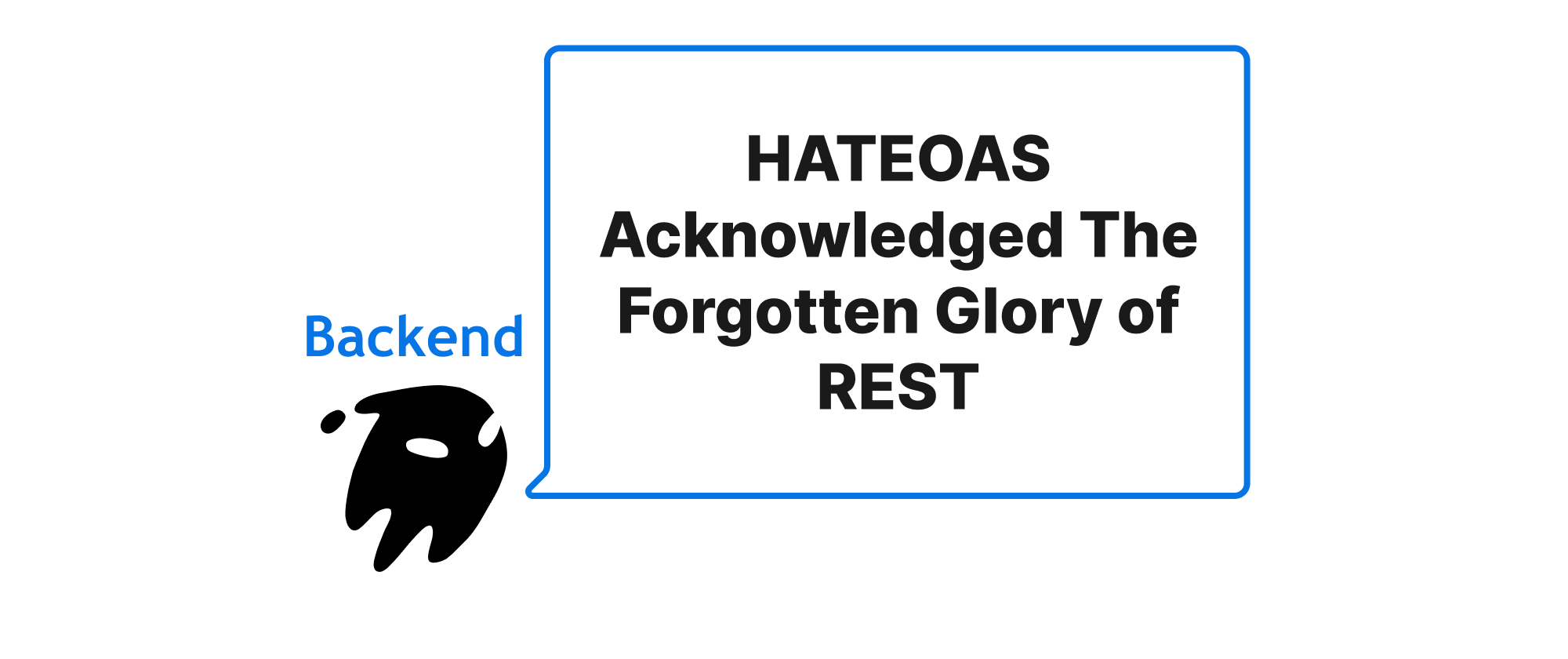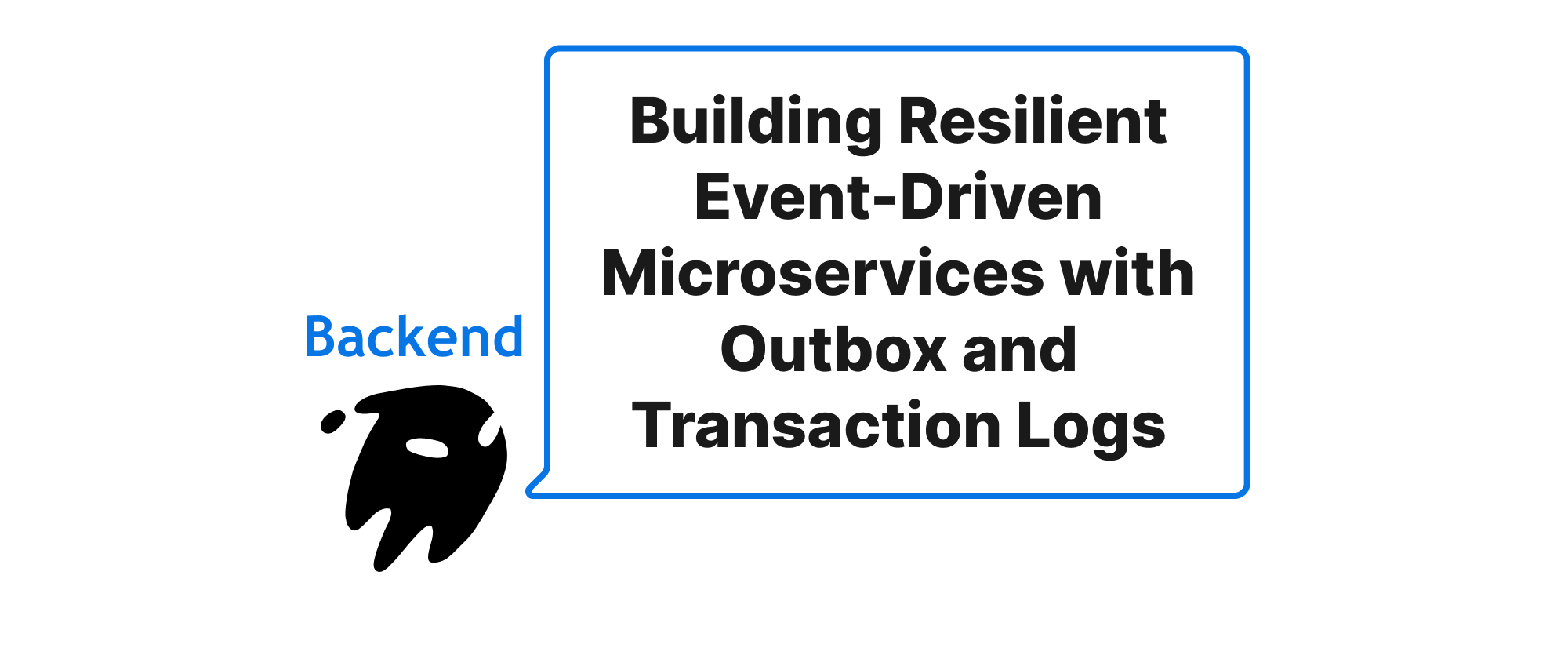HATEOAS Acknowledged The Forgotten Glory of REST
Takashi Yamamoto
Infrastructure Engineer · Leapcell

Introduction
In the ever-evolving landscape of backend development, RESTful APIs have long been the de facto standard for building scalable and maintainable web services. However, as applications grow in complexity, a subtle yet profound aspect of REST often gets overlooked or even explicitly dismissed: HATEOAS (Hypermedia As The Engine Of Application State). This crucial constraint, arguably the most powerful yet least adopted principle of REST, promises to unlock a truly decoupled and self-descriptive API experience. But in an era dominated by OpenAPI specifications and client-driven development, is HATEOAS still a relevant architectural choice, or has it become merely a theoretical ideal, a forgotten glory of the original REST vision? This article aims to explore the essence of HATEOAS, its practical implications, and its potential resurgence in modern API design, ultimately asking whether its time has come, or if it remains perpetually ahead of its time.
HATEOAS The Forgotten Glory Of REST
To fully appreciate the discussion around HATEOAS, let's first clarify some foundational concepts.
REST (Representational State Transfer): An architectural style for networked hypermedia applications. It defines a set of constraints that, when applied, yield a distributed system with desirable properties such as performance, scalability, simplicity, modifiability, visibility, portability, and reliability. Key constraints include client-server, stateless, cacheable, layered system, and uniform interface.
Uniform Interface: This is the most crucial REST constraint for our discussion. It dictates that there should be a uniform and generic way for clients to interact with resources. Four sub-constraints further define this:
- Identification of Resources: Resources are identified by URIs.
- Manipulation of Resources Through Representations: Clients manipulate resources by exchanging representations.
- Self-Descriptive Messages: Each message exchanged between client and server contains enough information to describe how to process it.
- Hypermedia As The Engine Of Application State (HATEOAS): The server transitions the application state through hypermedia, providing links within representations that guide the client on available actions and state transitions.
HATEOAS Explained
HATEOAS dictates that a client should not need prior knowledge of how to interact with an API beyond an initial entry point. Instead, the server provides links within its responses, guiding the client on what actions are currently available and how to perform them. These links act as control mechanisms, allowing the API to evolve without breaking clients, as long as the resource representations remain consistent.
Consider an example of an e-commerce order:
Traditional REST Response (without HATEOAS):
{ "orderId": "12345", "status": "pending", "totalAmount": 99.99, "customerId": "C001" }
To update this order, the client would need to know that a PUT /orders/{orderId} endpoint exists and requires a particular payload. For cancellation, it might know about DELETE /orders/{orderId}. This coupling means if the API changes its endpoint structure or available actions (e.g., "pending" orders can only be "cancelled" and not "updated" after a certain time), the client code breaks.
HATEOAS-driven REST Response:
{ "orderId": "12345", "status": "pending", "totalAmount": 99.99, "customerId": "C001", "_links": { "self": { "href": "/orders/12345", "method": "GET" }, "update": { "href": "/orders/12345", "method": "PUT", "type": "application/json" }, "cancel": { "href": "/orders/12345/cancel", "method": "POST" }, "customer": { "href": "/customers/C001", "method": "GET" } } }
In this HATEOAS example, the _links object explicitly tells the client what actions are possible from the current state of the order. If the order status changes to "shipped," the server might provide links to "track" or "return" actions, but no longer "update" or "cancel." The client merely needs to understand the link relations (e.g., "update", "cancel") and follow the provided URIs and methods.
Implementation in Frameworks
Many modern backend frameworks offer libraries or built-in support for HATEOAS.
Java (Spring HATEOAS):
Spring HATEOAS is a popular library that simplifies HATEOAS implementation for Spring Boot applications.
import static org.springframework.hateoas.server.mvc.WebMvcLinkBuilder.*; import org.springframework.hateoas.EntityModel; import org.springframework.hateoas.IanaLinkRelations; import org.springframework.http.ResponseEntity; import org.springframework.web.bind.annotation.*; @RestController @RequestMapping("/orders") public class OrderController { @GetMapping("/{id}") public ResponseEntity<EntityModel<Order>> getOrder(@PathVariable String id) { Order order = findOrderById(id); // Assume this fetches the order from a service EntityModel<Order> orderModel = EntityModel.of(order); orderModel.add(linkTo(methodOn(OrderController.class).getOrder(id)).withSelfRel()); if ("pending".equals(order.getStatus())) { orderModel.add(linkTo(methodOn(OrderController.class).updateOrder(id, null)).withRel("update")); orderModel.add(linkTo(methodOn(OrderController.class).cancelOrder(id)).withRel("cancel")); } else if ("shipped".equals(order.getStatus())) { orderModel.add(linkTo(methodOn(OrderController.class).trackOrder(id)).withRel("track")); } orderModel.add(linkTo(methodOn(CustomerController.class).getCustomer(order.getCustomerId())).withRel("customer")); return ResponseEntity.ok(orderModel); } // Other methods like updateOrder, cancelOrder, trackOrder with @PostMapping or @PutMapping // ... }
In this Spring example, EntityModel.of(order) wraps the Order object, and then add() is used to attach Link objects, created using WebMvcLinkBuilder for convenience. linkTo and methodOn are powerful tools to generate URIs based on controller methods.
Node.js (Express with a HATEOAS helper library):
While Node.js doesn't have a direct equivalent to Spring HATEOAS out-of-the-box, helper libraries can be created or adopted.
// order.routes.js const express = require('express'); const router = express.Router(); function addHateoasLinks(order) { const links = { self: { href: `/orders/${order.orderId}`, method: 'GET' }, customer: { href: `/customers/${order.customerId}`, method: 'GET' } }; if (order.status === 'pending') { links.update = { href: `/orders/${order.orderId}`, method: 'PUT', type: 'application/json' }; links.cancel = { href: `/orders/${order.orderId}/cancel`, method: 'POST' }; } else if (order.status === 'shipped') { links.track = { href: `/orders/${order.orderId}/track`, method: 'GET' }; } return { ...order, _links: links }; } router.get('/:id', (req, res) => { const orderId = req.params.id; const order = findOrderById(orderId); // Assume this fetches the order if (!order) { return res.status(404).send('Order not found'); } res.json(addHateoasLinks(order)); }); module.exports = router;
This Node.js example demonstrates a manual approach to injecting HATEOAS links, often encapsulated within a utility function or middleware.
Application Scenarios
HATEOAS shines in particular scenarios:
- API Evolution and Long-Term Maintainability: When an API's capabilities are expected to change frequently, or new features are added, HATEOAS allows clients to adapt without requiring code changes for every endpoint alteration.
- Generic Clients: Building truly generic clients that can interact with any API exposing a certain resource type by simply following hypermedia controls without specific endpoint knowledge.
- Human-Readable APIs: While clients are usually programs, the self-descriptive nature of HATEOAS can also make it easier for human developers to explore and understand an API.
- Decoupling Client and Server: Reducing the tight coupling between client and server, allowing independent deployment and versioning of each.
Why is it "Forgotten"?
Despite its architectural benefits, HATEOAS faces challenges:
- Complexity for Simple APIs: For simple CRUD APIs, the overhead of generating and parsing links can seem unnecessary.
- Client-Side "Ignorance": Many clients are designed to know exactly which endpoints to hit. Developers often prioritize explicit API documentation (like OpenAPI) over dynamic link discovery.
- Lack of Tooling: While some frameworks offer support, robust, language-agnostic client-side HATEOAS parsers and SDK generators are less common compared to those for traditional REST.
- Stateful Confusion: Misunderstanding how HATEOAS relates to statelessness. HATEOAS manages application state transitions through hypermedia, not server-side session state.
- Developer Mindset: The prevalent development paradigm often favors explicit contracts and early binding, which HATEOAS challenges.
Conclusion
HATEOAS, while a cornerstone of the REST architectural style, has largely remained an unimplemented ideal in mainstream API design. It offers undeniable benefits in terms of API discoverability, evolvability, and true client-server decoupling, making it a powerful tool for long-lived, complex systems where independent evolution is paramount. However, its perceived complexity, the prevalence of alternative documentation like OpenAPI, and a general developer preference for explicit contracts have marginalized its adoption. While not every API requires the full power of HATEOAS, for those seeking truly resilient and adaptable architectures, embracing HATEOAS can transform an API from a static contract into a dynamic, self-navigable landscape, proving that it remains a potent and relevant, albeit often overlooked, principle in modern API design.


